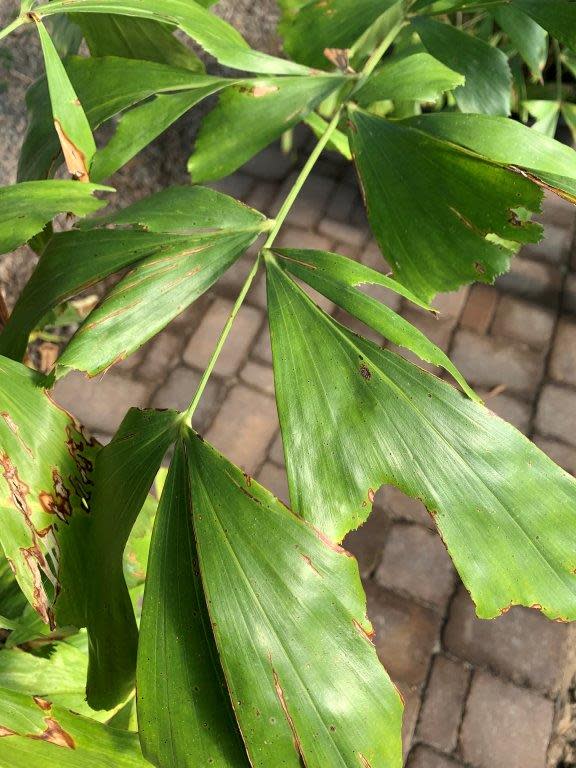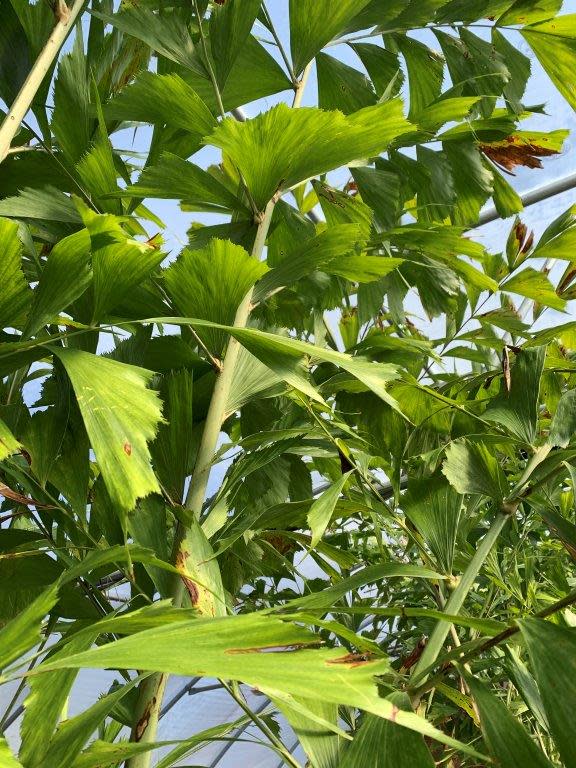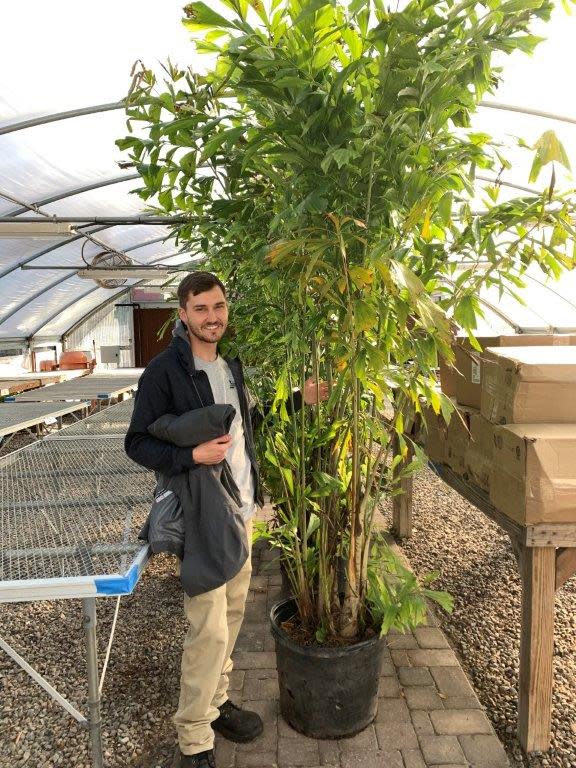Bring the outdoors in this winter with a tropical fishtail palm

My first exposure to the distinctive, tropical fishtail palm was in the late 1990s when my job was landscape manager for Universal Orlando. We were in the construction phase of the exciting “Islands of Adventure” theme park, and one task was to create an instant jungle aesthetic for the Jurassic Park section.
This included ordering massive, leafy palms to anchor the cue lines, creating nearly opaque screening in which a Velociraptor could hide under an overstory of dappled shade. The healthy Hollywood-scale budget allowed us to purchase huge single stem caryota species from southeast Asia via California, and multi-trunk from south Florida nurseries.

Caryotas get their “fishtail“ nickname because the leaflets are jagged or "chopped" appearing at the distal end, much like the tail of a fish. They are also a species with a bipinnate leaf. Seedlings do not have this latter characteristic, but over time it becomes apparent. “Bipinnate” means that the leaf has its usual stem like other pinnate palms. However, it also has secondary branching pinna off the primary stem of the leaf. Off this secondary pinna come the leaflets. The leaflets have the "fishtail" appearance. The tallest of the species look like a huge fern in the sky, their huge lacy leaves making a beautiful silhouette. A dark colored webbing, reminiscent of burlap, is frequent at the leaf base and on the trunk. This “fabric” results as the felted and scaly leaf sheaths disintegrate into black fibers. The unique character of a fishtail palm makes it very elegant and distinctive.
The majority of caryota are single trunk species, those towering ferns in the sky. The one most often used as a houseplant is a suckering species, caryota mitis. "Suckering" means that it normally produces multiple stems, new stems emerging near the base of the "mother" trunk. This is a smaller species, reaching typically ten to twenty feet in height and having trunks about four to six inches in diameter.

So, 30 years later, my horticulture career has brought me to serve as director for the New Hanover County Arboretum and Cooperative Extension. Serendipitously connected once again with fishtail palms through the film industry, I had a phone call from the “Greens” department at our local Screen Gems studio. The filming of Netflix “Florida Man” was finished, and they offered to donate ten large Fishtail palms to the Arboretum, retired from their film careers. I heartily agreed to accept them as a donation to Friends of the Arboretum to use for raising funds for our worthy programs and grounds. (Being a tropical plant, they are not easily suited for in-ground planting in our zone 8, but we may try a few in a cozy microclimate near a heat-conserving concrete wall at the Arboretum to experiment.)
We have several of these 10’+ beauties in nursery pots available for $150 each. Arrange to stop by the Arboretum greenhouse between 9 a.m. and 2 p.m. Monday through Friday next week and call MaryBeth, 910-798-7660 to make an appointment for pick up. Or, with membership in Friends https://thefriends.wildapricot.org/, one can be delivered to your home or office in New Hanover County free of charge. Weighing in at about 75 pounds with an overall height of nearly 11’, you will want to have high ceilings, bright indoor light, and a large saucer and decorative pot to accommodate a 15-gallon container (1’3” high by 1’7” wide).

Lloyd Singleton is the director of the N.C. Cooperative Extension – New Hanover County Center at the Arboretum and can be reached at lsingleton@nhcgov.com. The grounds are free and open daily from 8 a.m.–5 p.m.
This article originally appeared on Wilmington StarNews: Bringing outdoors inside this winter with a fishtail palm
